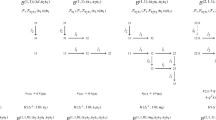Abstract.
Given two maps f 1 and f 2 from the sphere S m to an n-manifold N, when are they loose, i.e. when can they be deformed away from one another? We study the geometry of their (generic) coincidence locus and its Nielsen decomposition. On the one hand, the resulting bordism class of coincidence data and the corresponding Nielsen numbers are strong looseness obstructions. On the other hand, the values which these invariants may possibly assume turn out to satisfy severe restrictions, e.g. the Nielsen numbers can only take the values 0, 1 or the cardinality of the fundamental group of N. In order to show this we compare different Nielsen classes in the root case (where f 1 or f 2 is constant) and we use the fact that all but possibly one Nielsen class are inessential in the selfcoincidence case (where f 1 = f 2). We also deduce strong vanishing results.
Similar content being viewed by others
Author information
Authors and Affiliations
Corresponding author
Additional information
Supported in part by DAAD (Germany) and CAPES (Brazil).
Rights and permissions
About this article
Cite this article
Koschorke, U. Selfcoincidences and roots in Nielsen theory. J. fixed point theory appl. 2, 241–259 (2007). https://doi.org/10.1007/s11784-007-0046-1
Published:
Issue Date:
DOI: https://doi.org/10.1007/s11784-007-0046-1




